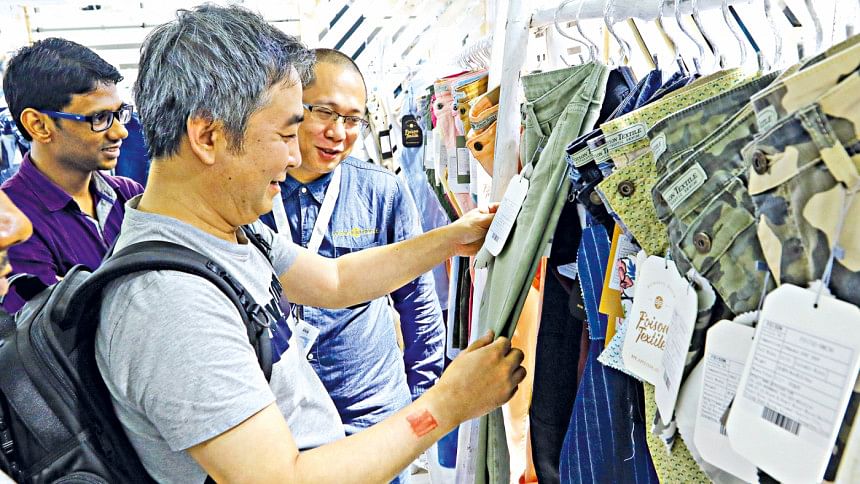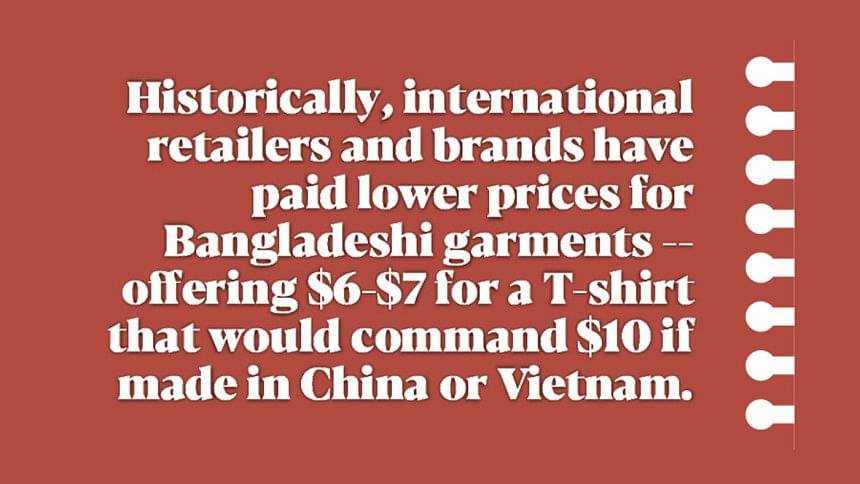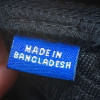Price war in the garment sector: Exporters fear a race to the bottom

Bangladesh's $40 billion garment industry, the lifeblood of its economy, faces further uneven price competition as a US-led tariff war threatens to reshape global apparel trade flows. With China, Vietnam and Cambodia vying for market share in Europe and beyond, Bangladeshi exporters fear a race to the bottom on prices -- one they may not win.
If the tariff is not reduced during the 90-day reprieve announced by US President Donald Trump, American buyers are likely to push Bangladeshi suppliers for even lower prices to make up for the extra cost of clearing goods through customs.

Bangladesh also faces competition from its South Asian neighbours, India and Pakistan, both of which enjoy lower duty rates and are therefore positioned to supply at more competitive prices, putting further pressure on Bangladesh. Then there are Egypt and Kenya, two emerging suppliers that face lower tariffs on garment exports to the US than Bangladesh.
Meanwhile, heavily penalised China, facing tariffs as high as 145 percent, is expected to redirect excess capacity to alternative markets such as the EU and Japan. Vietnam may follow a similar path. This diversion is likely to intensify competition in Europe and Asia, driving down prices and further eroding Bangladesh's market share and profit margins in those regions.
The tariff-induced strain may ripple through the value chain. US consumers could face price hikes on apparel, potentially dampening demand and triggering a slowdown that would directly affect suppliers in Bangladesh.
Bangladesh currently ranks as the second-largest garment exporter to Europe. In terms of volume, it has surpassed China as the EU's largest supplier, shipping nearly $25 billion worth of garments a year. However, this leadership position is at risk as global brands intensify pressure for price reductions amid the ongoing trade conflict.
Historically, international retailers and brands have paid lower prices for Bangladeshi garments -- offering $6-$7 for a T-shirt that would command $10 if made in China or Vietnam. This pricing dynamic, while attracting bulk orders, has also forced many Bangladeshi exporters to operate on razor-thin margins. A Fair Wear Foundation study found that up to 39 percent of Bangladeshi garment exporters accept prices below production cost, often in hopes of maintaining long-term relationships with international buyers.
This lopsided pricing dynamic benefits international brands, which routinely sell Bangladeshi-sourced garments at a markup of as much as 400 percent, sometimes fetching $25 per piece in Western markets despite sourcing them for $5. Local representatives for these brands have acknowledged this profit margin.
The structural disadvantages facing Bangladesh, such as long lead times, inefficient production processes, inadequate infrastructure and logistics, and weak bargaining power, further constrain its ability to resist price suppression. Intense competition among too many domestic suppliers compounds the issue, as exporters underbid each other in saturated markets.
According to AK Azad, managing director of Ha-Meem Group, which exports 90 percent of its production to the US, Bangladesh's average tariff rate remains high at 26 percent, with a 10 percent baseline, which is still steeper than those faced by India or Pakistan. This differential gives regional competitors an edge, especially in a price-sensitive environment.
While the full impact of the tariff regime will become clearer over the next two to three months, exporters are already grappling with heightened price pressure, Azad said. Buyers are beginning to demand that Bangladeshi suppliers absorb part of the new US tariffs, cutting further into already tight margins.
Faruque Hassan, managing director of Giant Group and former president of Bangladesh Garment Manufacturers and Exporters Association (BGMEA), said buyers are asking suppliers to share the cost burden of the 10 percent universal tariff. He warned that rising retail prices in the US may depress consumption, which would again reverberate down the supply chain.
Former BGMEA president Rubana Huq echoed these concerns, saying US buyers are most likely going to ask the suppliers to share the extra cost that will fall on the American consumers.
"There may be serious undercutting among ourselves as all US suppliers will try and secure their exports to the US, the fastest growing market," she said.
"There may also be Cambodia and Vietnam dropping their prices for not only the US but also the EU, as they too will need to fill their capacities," she said. Additionally, India, Pakistan, and Turkey enjoy an advantage in the imposing and pausing of tariffs by the US.
Exporters have reported that retailers are rushing to ship goods within the 90-day pause in the tariff schedule, using the window to push through orders at reduced prices. One exporter, who ships 60 percent of his production to the US, confirmed that brands are pressuring factories to agree to lower rates under the current uncertainty.
Some exporters remain cautiously optimistic that Bangladesh could capture a portion of the orders shifting away from China due to the US tariff hikes.
"Trump mainly targeted China with the tariff increase, so there's a window of opportunity for Bangladesh," said one exporter, speaking on condition of anonymity. "But we must act quickly and negotiate better terms."
However, any opportunity that arises is likely to come with reduced prices. Buyers are already signalling that while they may shift sourcing to Bangladesh, they expect deeper discounts to offset tariff-related costs, undermining any potential gains.

 For all latest news, follow The Daily Star's Google News channel.
For all latest news, follow The Daily Star's Google News channel. 





Comments